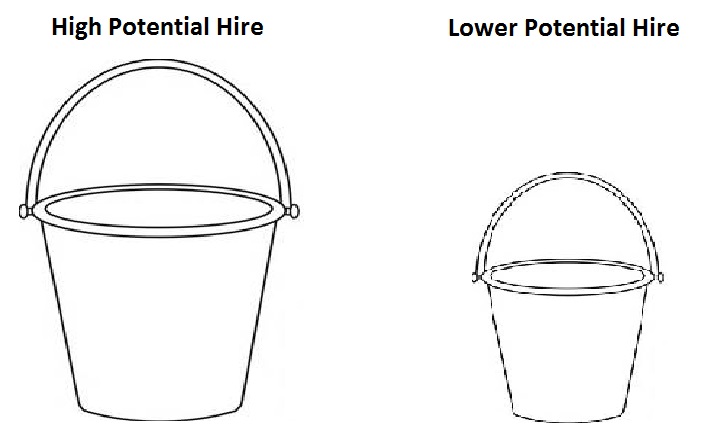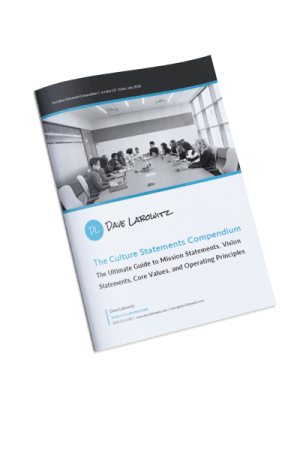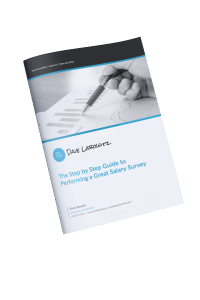I had dinner with a former employee recently and he was trying to figure out if it was time for him to move on to a new company. His issue wasn’t so much his compensation, although he would have liked more, and it wasn’t so much his role, as he enjoyed most of what he did. Instead, what was bothering him was feeling he did not have a good future at the company.
From working with him I knew he had a lot of potential: he combined intelligence and resourcefulness with a solid technical skillset. What he lacked in management skill he made up for with fantastic hiring decisions, so his team’s performance was satisfactory to strong. Unfortunately, his personal performance was all over the map. If he enjoyed a project he’d knock it out of the park, but if he was less enthused with an assignment he’d fail to deliver.
From his perspective, he was working hard and delivering well on what he saw as his top priorities. But management made some decisions concerning his department without bringing him into the discussion, leaving him feeling disrespected and concerned they were tuning him out. The signs were clear: this led to his motivation suffering further in areas where he was already struggling to stay engaged. Management had addressed the issue of inconsistent performance with him on several occasions, including regular reviews which impacted his compensation.
Even though he frequently put in extra hours, went out of his way to be available for emergencies, and performed quite well in certain areas, the gap between his potential and his delivery showed up to management as lack of commitment and effort. This resulted in their losing trust in him. As they lost trust they communicated with him less, challenged him less, and put less effort into coaching him.
This can be a critical error. It can also be a sizeable opportunity.
If I hand someone a crappy project and they crush it anyway, they’ve really capitalized on an opportunity to prove themselves. These are the people I want on my team! I know they’re team players and I can count on them. The only drawback is that they might end up catching the occasional extra-crappy project because I know I can count on them. But I’ll always make it worth the while of my all-stars with loyalty, opportunity and compensation.
The discussion left me wondering how a better outcome could have been reached. I’ve come to the conclusion that both the employee and management could have behaved differently. On the employee side, if he had he committed 100% to everything he did, he would’ve been in great shape. As utopian an idea as that is, though, we know no employee can bring 100% all of the time. Could he have done better? Sure. But what could management have done better to help him along the way?
More than anything, a deeper understanding of this issue would have helped management coach him to better results.
An analogy for workplace “potential”, an aggregation of innate talents and experience, is that of an empty bucket. Some people are hired with a large bucket, others with a small bucket. But they all show up on their first day with an empty bucket. They fill it with effort, commitment and results. Hiring managers are adept at hiring those they perceive as having large buckets. The goal is always to draft an all-star. But why do they sour so quickly on some hires and not on others?
As time goes by, each new team member begins to fill their bucket at different rates. After time, the picture can begin to look like this:
In this example, management is inevitably thrilled with the hire they perceive as having lower potential and frustrated with the hire they see as having higher potential. But why? The total delivered work product is similar, leaving the only difference being management’s perception of potential. This understanding is critical for a self-aware manager.
It is critical to stay aware of how our perceptions of employee potential impact our expectations. Share on X
Rather than becoming increasingly frustrated and disconnecting from an “underperforming” high potential hire, try the following:
- Reassess potential constantly - Hiring is a judgmental process and no one likes to be wrong. However, sticking to the first impression of a hire’s potential based on the limited information available during their original interview process is unwise. You’ll inevitably have far more information after working with someone for a few months, so it is wiser to reassess your initial read. Be aware that if your initial read overestimates a hire’s potential you will set the bar too high; if you underestimate you will set the bar too low. It’s very easy to overestimate someone who interviews well, especially if you count on them being strong in a critical skillset that turns out to be weak. Think about how different the picture may look when you adjust your perception of potential.
- Understand you can grow your team’s potential – Remember workplace “potential” is an aggregation of innate talents and experience. You may not be able to expand your team’s innate talents, but you can certainly expand their experience through coaching and mentoring. The more you teach, the larger their buckets grow.
- Share these concepts with your team – Take the opportunity to have a discussion about how the gap between results and perceived potential can show up as a lack of commitment and effort. You will learn a lot more about their perspective, like in the above story. That employee was giving a solid effort, he was just doing it selectively. He didn’t realize he was damaging his reputation with management to such an extent. Had this conversation occurred, it could have helped him realize the importance of load balancing his effort better.
- Help your team build confidence - It can only help your team if you build their confidence by telling them you believe they have high potential. In almost every case, you have the opportunity to tell them this honestly, as shown below.
As leaders, this approach enables us to see potential as a fluid asset in which we can invest and grow. It is critical to stay aware of how our perceptions of employee potential impact our expectations. If we communicate regularly with the intent of refining these perceptions, it will lead us to take the proper actions to help our team deliver maximum results.
Especially for employees we see as having high potential, it is important for them to understand how we compare their results to their potential. If there is a gap there, it can be a simple but substantial teaching opportunity that pays dividends in return.
How do you assess potential? Shoot me a note and let me know!










